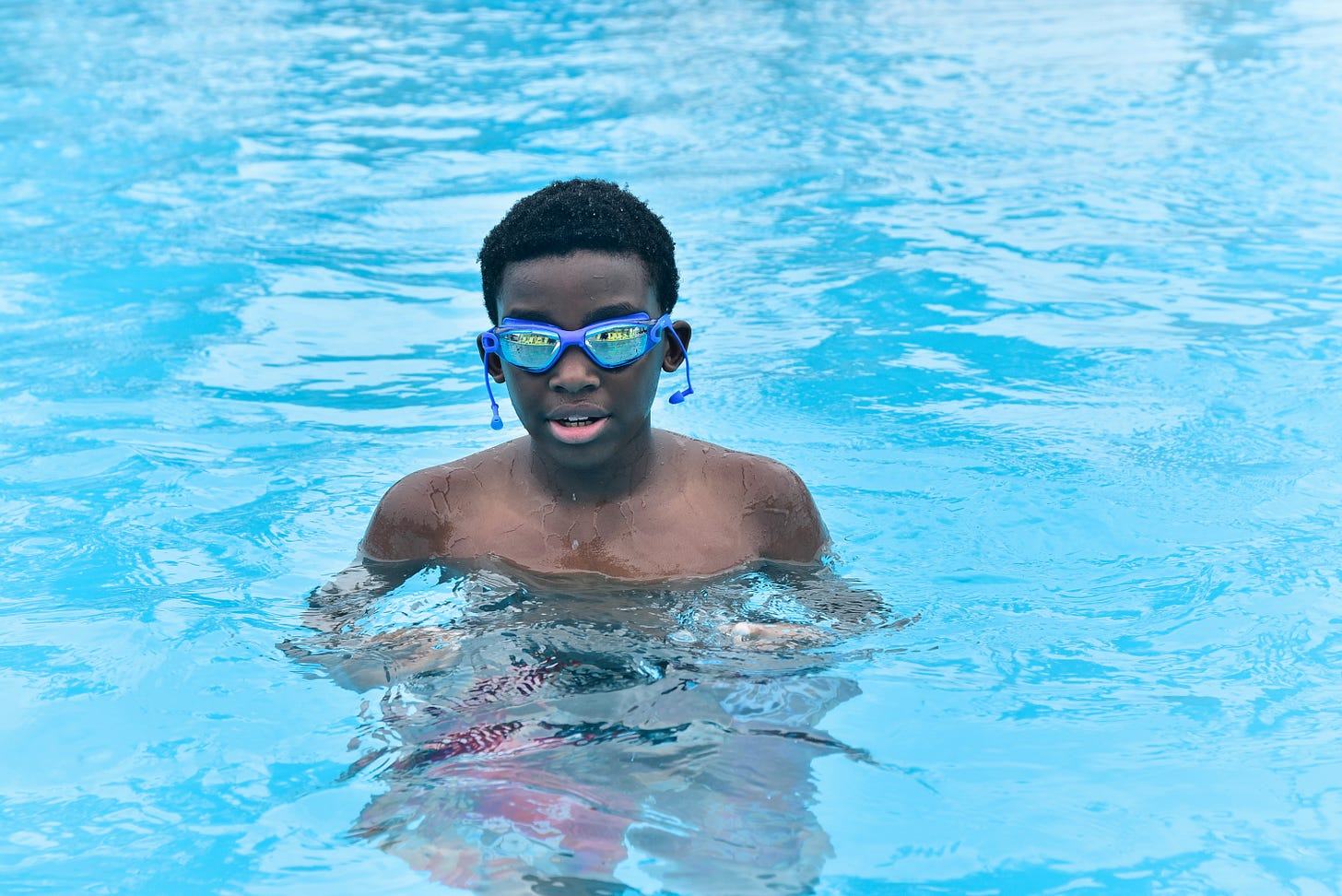A Black outdoor nonprofit is giving out scholarships to teach you how to swim
Outdoor Afro launched Making Waves to address the disproportionate number of Black kids who drown in pools and provide water safety education to caregivers.
A national nonprofit organization is offering scholarships to cover the costs of anyone, at any age, interested in learning how to swim.
Outdoor Afro, which aims to connect Black people and nature, operates Making Waves — a program that seeks to address the disproportionate number of Black children who drown in pools and provide education on water safety.
The nonprofit partners with organizations nationwide, like Black People Will Swim in New York and the Foss Swim School in Minnesota, for water safety and swim lessons. Outdoor Afro offers “swimmerships” of up to $200 per swimmer or $400 per family to cover the costs of beginner swim lessons.
The organization said it has awarded more than 3,500 swimmerships since the program’s launch in 2019. In 2025, the nonprofit wants to help 2,000 more Black children and caregivers learn how to swim.
Learning how to swim may be more important than ever. Federal cuts gutted the CDC’s Injury Prevention Center, eliminating teams that focused on drowning deaths and prevention nationwide.
Those teams were “crucial in preventing drownings, especially in Black and minority communities who have long faced disproportionate rates of drowning,” Sharon Gilmartin, executive director of Safe States Alliance, told Word In Black.
“Its support for swim education and community programs was closing deadly gaps and saving lives across the country — until April’s federal layoffs eliminated the very team leading this lifesaving work,” she explained, highlighting the importance of programs like Making Waves.
According to the Centers for Disease Control and Prevention, Black people under the age of 30 are almost two times more likely than their white peers, and in swimming pools, Black children aged 10 to 14 drown at a rate nearly 8 times higher than white children.
Making Waves was created “in response to the alarming number of Black children who drown today tied to the historic prohibition of Black access to beaches and public pools,” the nonprofit said.
Apply for a Swim Scholarship here.




Thank you. We lost my 17 year old stepson 6 weeks ago in accidental drowning. This is so needed. I plan to donate. 💔
On a pilgrimage across the Edmund Pettus Bridge in Selma, Alabama I experienced a moment of transformation. The bridge spans the Alabama River, which was full of water that March day as it was on March 7, 1965, remembered as "Bloody Sunday", when civil rights marchers were brutally beaten by police. Standing on that bridge, over that murky river, I recalled the story that Congressmember John Lewis told about crossing the bridge during the Selma to Montgomery civil rights march. Hosea Williams, another organizer, looked over the bridge
and asked Lewis, “John, can you swim?” At that moment I fully understood one tiny part
of the legacy of slavery in the lives of human beings. Enslaved people were not allowed to swim, and were encouraged to fear drowning, because going into a river is an excellent strategy for evading bloodhounds searching for a so-called runaway. One of the many manifestations of Jim Crow was the closure of public swimming pools so that black and white people did not share the same water. The starvation of public services, including parks, pools, and swimming lessons in schools, means that generations of African-Americans never learned to swim. In the middle of the Edmund Pettus Bridge, I thought about my childhood spent on swim teams at Jewish Community Centers, YMCAs, Elks Clubs, and city pools. Making sure everyone can learn to swim: that is one tiny, almost trivial way, barely discernable, that we can begin to repair the generational scourge of slavery. Thank you for introducing me to this opportunity to make a small contribution toward reparations for America's great sin.